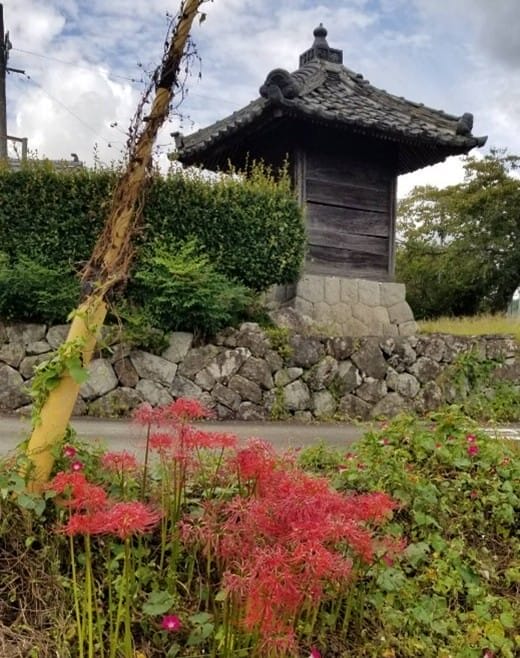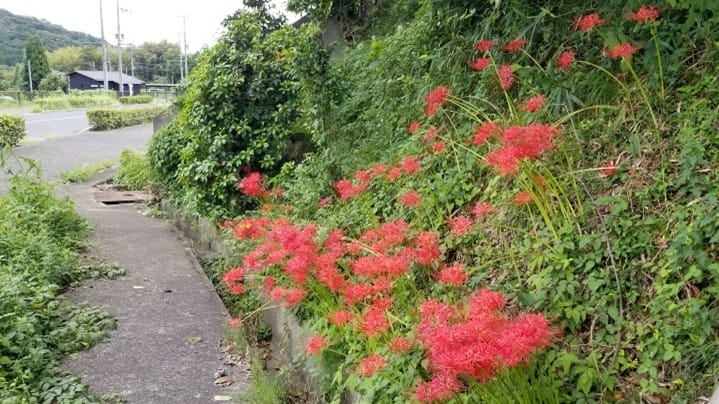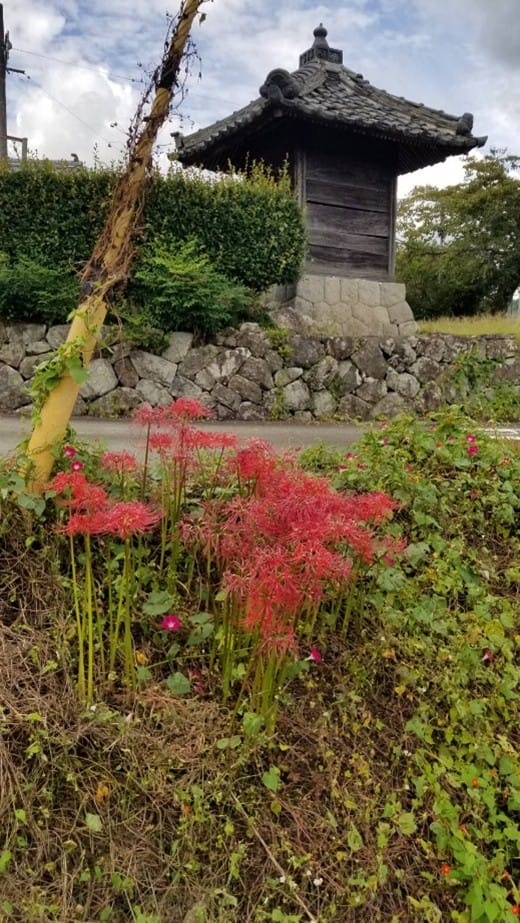The changing of the seasons often has its precursors—signs that change is on the way. The beautiful spider lily is one of those signs.
In my area, the celebration of the mid-August Obon festival is followed, around the beginning of September, by the rice harvest. Once the harvest is done—or sometimes even before—the perimeter around the rice fields is cleared of weeds and grass. Then, around mid- to late September, the spider lily begins to bloom in those perimeters. The spider lily, or Higanbana (the Equinox plant) as it is called in Japanese, gained its name because the flowers seem to shoot up overnight right around the time of the Fall Equinox (Shūbun no hi).
But the spider lily has many other peculiar names. Here are a few: red magic lily, hurricane lily, ghost flower, snake flower, razor flower, fox flower, abandoned child flower, resurrection flower, hell flower, and dead man’s or corpse flower. It is said that there are over a thousand different names from all over Japan for this one flower. Symbolically, the flower is primarily associated with death, the afterlife, and final goodbyes—as the life of summer turns into the death of winter.
Here in Tambasasayama, it is often striking how quickly the weather changes after Obon. The nights become cooler, sunsets come earlier, the types of clouds shift, and the wind often changes direction as well. It is almost as though the spider lilies are telling us, “Prepare—for change is coming!” They are the perfect flower to signal the slow death of summer, the falling of autumn leaves, and the onset of winter.
Spider lilies are commonly found around the edges of rice fields. They are also planted near graves and cemeteries, and are connected with the autumnal equinox and the Buddhist Higan festival, which honors ancestral spirits. Their poisonous bulbs serve a practical purpose as well, deterring animals from agricultural fields and gravesites, further reinforcing the flower’s connection to death and the sacred.
There is also an old folktale associated with the spider lily, especially told to children. It warns them not to bring the flowers home, for doing so might cause the house to burn down or the mother to die. This was, no doubt, a scare tactic by parents to keep children from touching the plant, since, as mentioned earlier, its poisonous bulbs can cause serious injury or even death.
On the brighter side, these flowers also herald the beginning of the delicious autumn harvest season. For a few weeks in October, Tambasasayama becomes crowded with traffic and tourists, all eager to see, smell, and taste the seasonal delicacies sold in this country town. If you have the opportunity to visit in October, be prepared for long waits and full restaurants—but as the saying goes, the wait is worth it!



